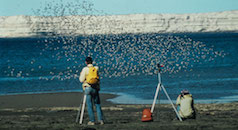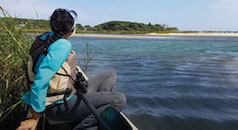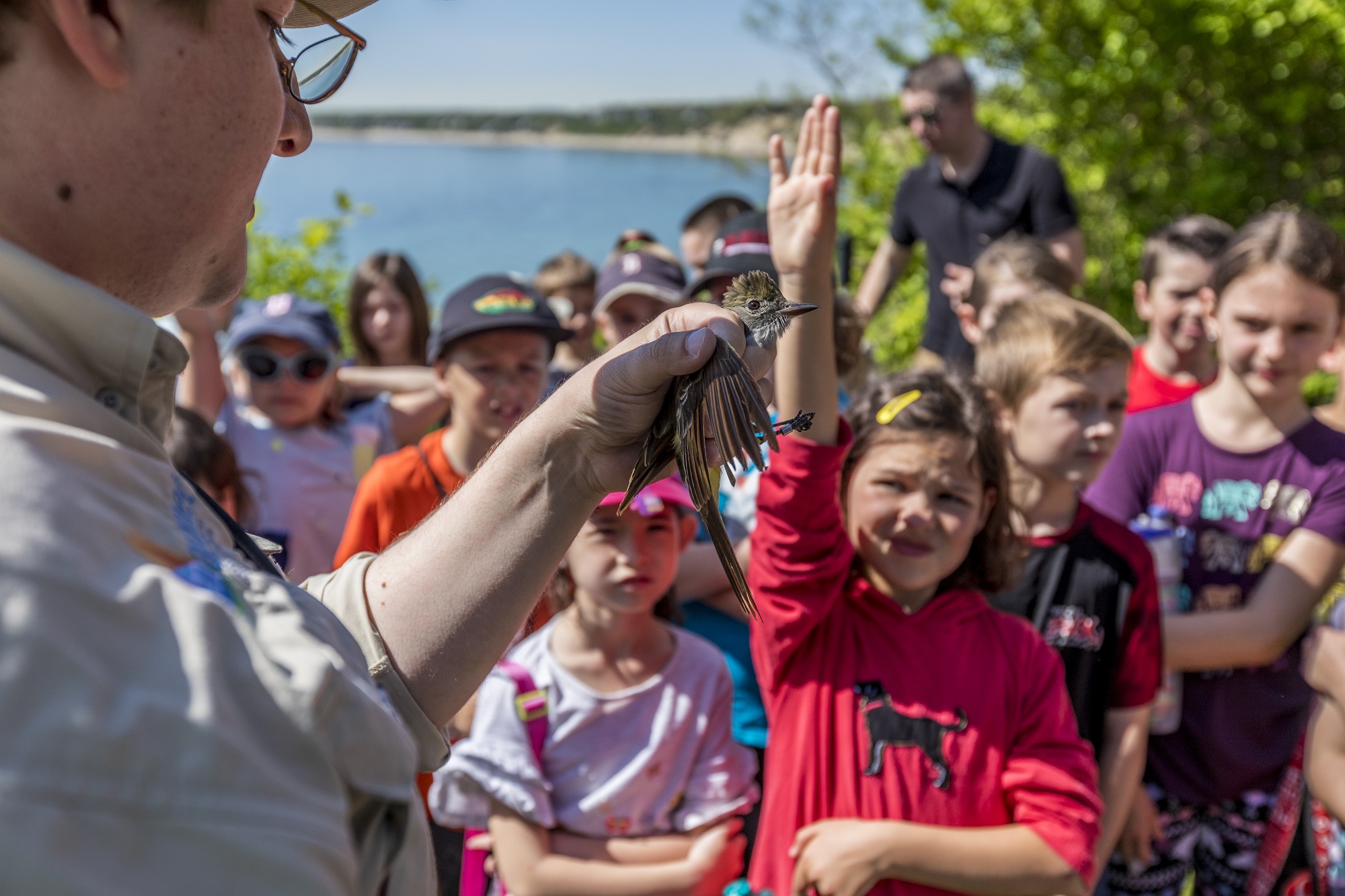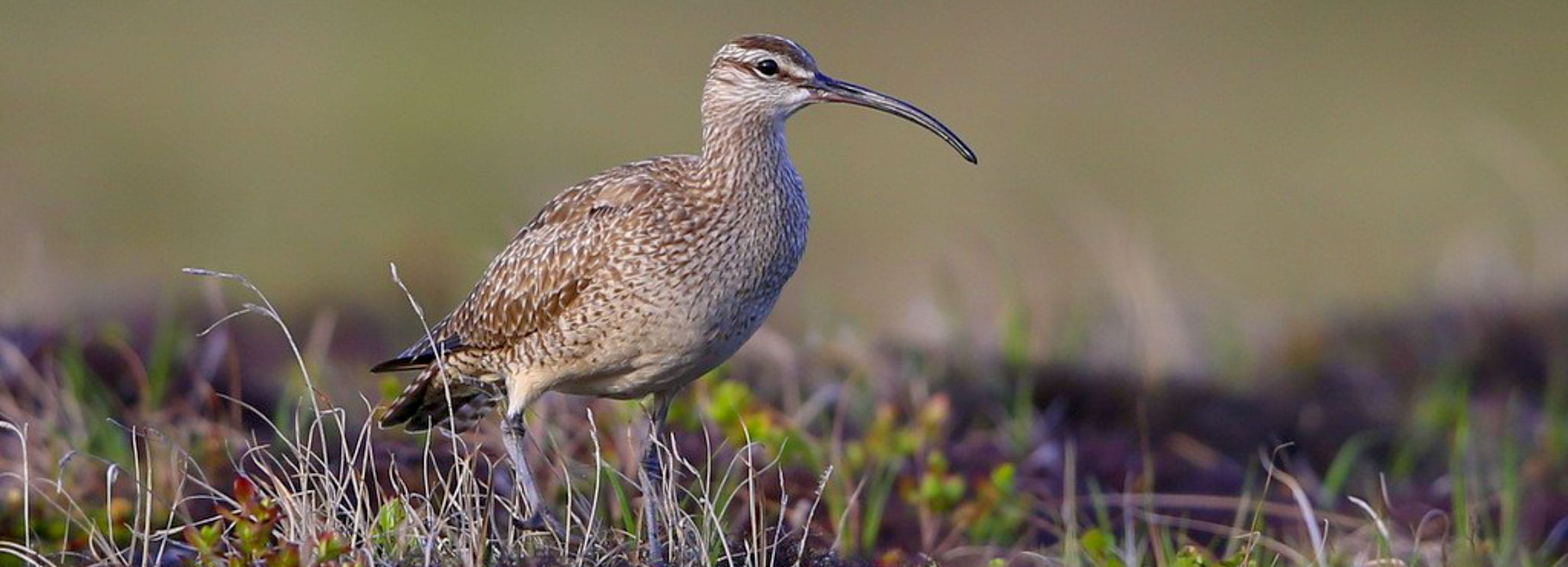From July through late September, Whimbrels migrate southward from their sub-Arctic tundra breeding grounds to Cape Cod, Massachusetts. While on the Cape, this large shorebird spends up to several weeks in the saltmarshes feeding on fiddler crabs—an important staple of their diet. After replenishing their energy reserves, building fat reserves and flight muscles, these Whimbrels will make a non-stop, trans-oceanic flight to their wintering grounds in the Caribbean Islands or all the way to the north coast of South America.
These Whimbrels need to overcome many challenges on their long journey, ranging from natural predators to a myriad of human-made threats. Join us for a webinar on Thursday, January 14, with Manomet’s Alan Kneidel and Brad Winn, Mark Faherty, staff Biologist with Mass Audubon’s Wellfleet Sanctuary, and Dr. Sandra Giner, professor at the Central University of Venezuela, to learn what our innovative satellite-tracking research has uncovered about Whimbrel and other shorebirds.
Don’t miss this insightful online conversation about how we are working to protect these stunning shorebirds!
Panelists:
- Mark Faherty, Science Coordinator, Mass Audubon’s Wellfleet Bay Wildlife Sanctuary
- Professor Sandra Giner, the Institute of Zoology and Tropical Ecology at the Central University of Venezuela (IZET-UCV)
- Alan Kneidel, Staff Biologist, Manomet
- Brad Winn, Director of Shorebird Habitat Management, Manomet





 Back to all
Back to all